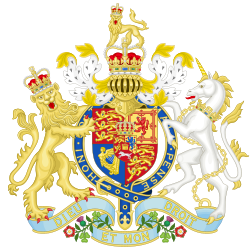Origins
Southwark Water Company
| Southwark Water Act 1834 | |
|---|---|
| Act of Parliament | |
 | |
| Long title | An Act for belter supplying with Water the Borough of Southwark, and Parishes and Places in the County of Surrey near thereto. |
| Citation | 4 & 5 Will. 4. c. lxxix |
| Territorial extent | United Kingdom |
| Dates | |
| Royal assent | 25 July 1834 |
| Commencement | 25 July 1834 [a] |
| Repealed | 22 July 1852 |
| Other legislation | |
| Repealed by | Southwark and Vauxhall Water Act 1852 |
Status: Repealed | |
| Text of statute as originally enacted | |
The Borough Waterworks Company ("Borough" being an alternative name for Southwark) was formed in 1770, originally supplying water to a brewery and to the surrounding area which spanned the distance between London and Southwark Bridges. The adjacent area was supplied by the London Bridge Waterworks Company; but that company was dissolved in 1822, and its water supply licence was purchased by the New River Company. The Borough Waterworks Company purchased the licence from the New River Company later that same year, and it was renamed the Southwark Water Company by the Southwark Water Act 1834 (4 & 5 Will. 4. c. lxxix). The company extracted water from the River Thames using steam engines to pump it to a cistern at the top of a 60-foot-high (18 m) tower. [1]
Vauxhall Water Company
| South London Waterworks Act 1805 | |
|---|---|
| Act of Parliament | |
 | |
| Long title | An Act for supplying the Inhabitants of the Parish of Saint Giles Camberwell, and Parts of the Parish of Saint Mary's Lambeth, and several other Parishes and Places in the County of Surrey, with Water. |
| Citation | 45 Geo. 3. c. cxix |
| Territorial extent | Great Britain |
| Dates | |
| Royal assent | 12 July 1805 |
| Commencement | 12 July 1805 [a] |
| Other legislation | |
| Amended by | |
| Repealed by | Southwark and Vauxhall Water Company Act 1845 |
Status: Repealed | |
| Text of statute as originally enacted | |
| South London Water Works Act 1834 | |
|---|---|
| Act of Parliament | |
 | |
| Long title | An Act to alter, amend, enlarge, and extend the Powers and Provisions of several Acts for enabling the Company of Proprietors of the South London Waterworks to supply the Inhabitants of the Parish of Saint Giles Camberwell and Parts of the Parish of Saint Marys Lambeth, and several other Parishes and Places in the County of Surrey, with Water; and to enable the said Company to supply the Inhabitants of the several Parishes of Saint Mary Lambeth, Saint Mary Newington, Saint George the Martyr, Saint Saviour, Saint John, Saint Thomas, Saint Olave, and Christchurch, all in the said County, with Water. |
| Citation | 4 & 5 Will. 4. c. lxxviii |
| Territorial extent | United Kingdom |
| Dates | |
| Royal assent | 25 July 1834 |
| Repealed | 30 June 1845 |
| Other legislation | |
| Amends | |
| Repealed by | Southwark and Vauxhall Water Company Act 1845 |
Status: Repealed | |
| Text of statute as originally enacted | |
The South London Waterworks Company (formally, The Company of Proprietors of the South London Waterworks) was established by local act of Parliament, the South London Waterworks Act 1805 (45 Geo. 3. c. cxix). The company extracted water from the Thames beside Vauxhall Bridge. In 1833 the company supplied 12,046 houses with approximately 12,000 gallons of water. [2] In 1834, the company was renamed the Vauxhall Water Company [1] (formally, The Vauxhall Water Works Company) by the South London Water Works Act 1834 (4 & 5 Will. 4. c. lxxviii).


